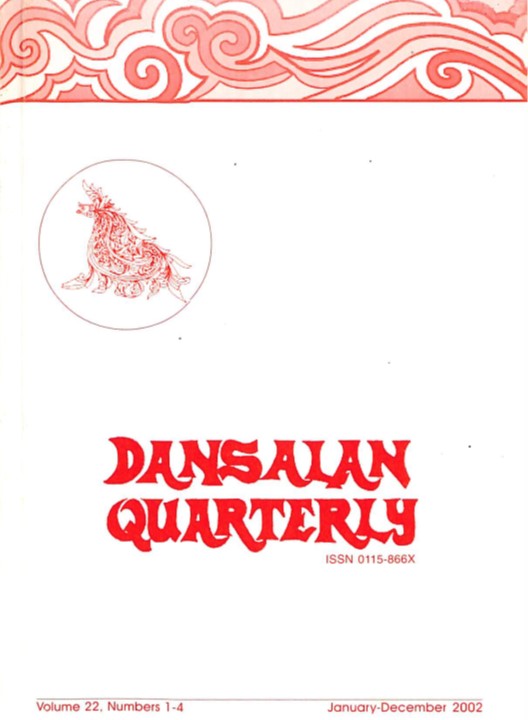January-December 2002 Vol. 22, Nos. 1-4
10 July 2022 Dansalan Quarterly
The contrasting themes in this issue only validates the richness of Moro literature. In the first paper, Bula presents a content analysis of the original archaic Maranao language text of love and courtship dialogue known as Kandaonga. To define, kandaonga is a traditional Maranao way of courtship in the form of poetic dialogue where the man and the woman indirectly express their love in verse. Bula translates the kandaonga in English to aid readers in understanding its deepest meanings and the values it serves. In the second paper, Kulintod adds to the multitude of scholarly work related to the Moro problem. The author provides an inquiry to the long years of struggle in Mindanao and attempts to identify effective solutions to the Moro problem as perceived by the youths. The study reveals the youths’ perceived nature and awareness of the problem, what they think are its root causes, and their suggested political, social, economic, and cultural solutions vis-a-vis their socio-demographic profiles. It proves how people from different walks of life have their own views and perspectives on how to solve the Moro problem, thus a multifaceted approach is required to solve it justly and permanently. In the third paper, Lingga seeks to investigate an alternative to war to address the deep-seated Moro sentiment in their fight for freedom and independence. The paper links the right to self-determination, the history of independence, among others, to the issue of Bangsamoro independence. It ends with a discussion on what it would be like if the budget spent to wage the war in Mindanao is spent on building economic opportunities such as infrastructure and education–perhaps genuine development will be achieved.
Please email dansalan.quarterly@dcfi.edu.ph to request a copy of the issue.

